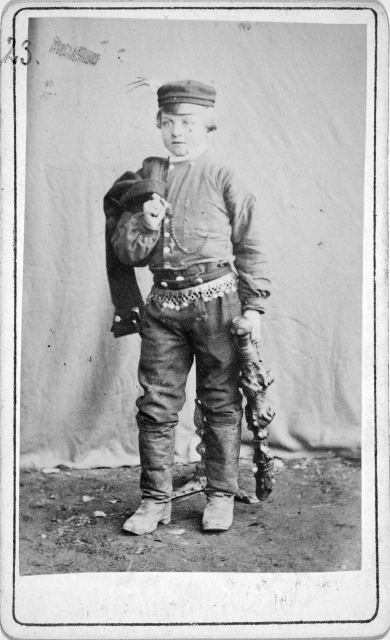 | ||
A bidding stick (sometimes also referred to as a budstikke, war arrow, or stembod) is a term for a wooden object, such as a club or baton, carried by a messenger and used by Northern Europeans, for example in Scotland and Scandinavia, to rally people for things (assemblies) and for defence or rebellion.
Contents
Scotland
In Scotland, such a token (Scottish Gaelic: crann-tara, translated as "fiery cross" or "cross of shame") was used to rally clan members to arms. The practice is described in the novels and poetry of Sir Walter Scott. A small burning cross or charred piece of wood would be carried from town to town. A widely known use was in 1745, during the Jacobite rising although it was used more recently in Canada, among Scottish settlers during the War of 1812, and among Clan Grant in 1820. In 1820, over 800 fighting men of Clan Grant were gathered, by the passing of the Fiery Cross, to come to the aid of their Clan Lord and his sister in the village of Elgin.
The name Crann Tara was used for a Scottish Gaelic current affairs programme on Grampian Television (ITV).
Scandinavia
When an enemy had arrived, bidding sticks (Old Swedish: buþkafle (sg.)) were sent in all directions. In Sweden, they consisted of clubs, or just wooden chunks; in Norway, there were repurposed arrows. Sometimes the bidding sticks had a string attached to one end and were charred on the other end; Olaus Magnus (1555) relates that those who did not bring the club to the next village would be hanged and their homesteads burnt down.
When the people were assembled to a thing, the object was in the shape of an axe, or if the meeting concerned blasphemy, it was a cross.
The objects were signed with runes or other marks in order to indicate the reason for the assembly (e.g. election of king at the Stone of Mora), and who had sent them. During the Middle Ages, using buþkaflar was the official method of assembling people, and they were only allowed to be carved by certain officials, e.g. governors and sheriffs.
They were especially efficient, however, when they were used to levy people against royal oppression and high taxes. After the Dalecarlian rebellion of 1743, strong checks were placed on the use of bidding sticks.
In Sweden, the bidding stick was standardized during the village reorganizations in 1742, and it was at the village level that they were frequently used. During the 19th and 20th centuries, more specific messages were attached to the clubs or inserted into a hollow space. Still in the early 20th century, there was a paragraph in Swedish law that stated that the bidding stick would be sent between the villages if there was a forest fire. — Similar paragraphs were also present in the Finnish legislation concerning the correct use of arpakapula, or budkavle in Finland’s Swedish, till the 20th century.
Newspapers
The concept of the bidding stick has been used as the name for several newspapers, including the Norwegian papers Budstikka and Budstikken, and the Faroese paper Tingakrossur.
